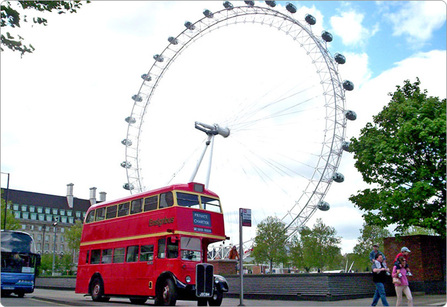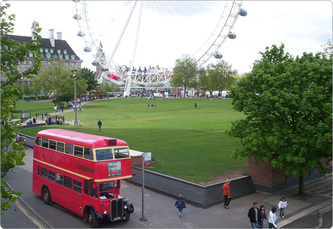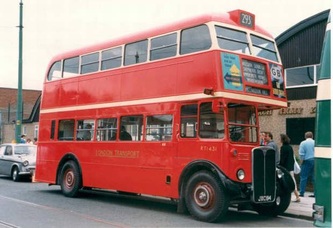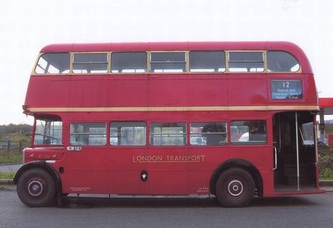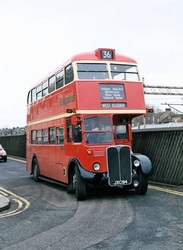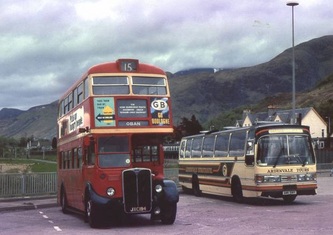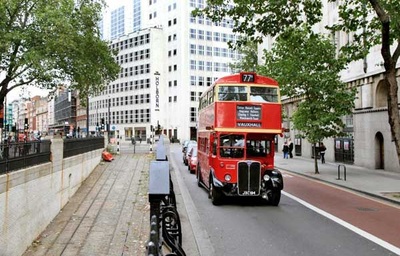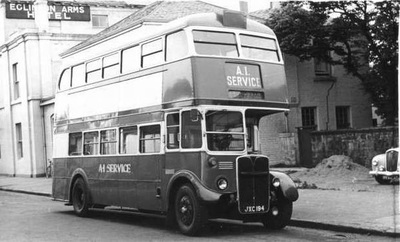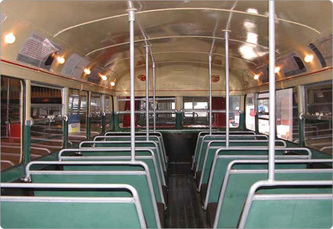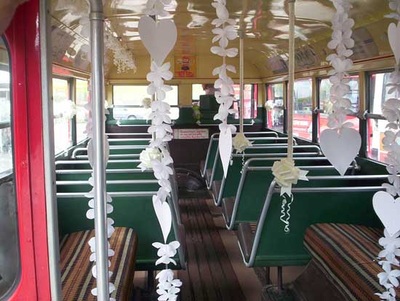Photos
|
RT Cravens - RT1431
Seating Capacity:
56 (30 upstairs and 26 downstairs) Special features: Ideal for film work and weddings. PA system which makes this bus ideal for tours of London. Description:
Perfect for weddings or if you simply want that vintage wow-factor for your event! Vehicle History
RT Class History:
The RT is surely one of the best know types of London bus with a look that is timeless as well as being a design classic. RT’s have featured in films, such as ‘Summer Holiday’ or James Bonds ‘Live and Let Die’ all adding to the familiarity of the type. The first RT took to the road in service weeks before the start of World War II and hence became the only true Pre War RT, however with the other 149 of this batch entering service throughout the next two years before hostilities ceased, these first 150 are universally all known as the Pre War batch.Following the end of the war it had been decided that the RT would form the majority of London double deck fleet and some modifications were made to the post war design to improve on what had been learnt from the operation of the pre war batch, thus started one of the great fleet replacements of war weary types as quickly as possible. By 1948 RT’s were entering service in a steady stream, there were however numerous delays and shortages caused by the lack of parts and skilled workers so soon after the end of hostilities. Body production was quicker than chassis leading to some new RT bodies being mounted onto STL chassis, thus making the short lived SRT class, (of which our very own RT4421 is one, formerly SRT 119). To also help production non standard body builders were used in addition to Park Royal and Weymann, Saunders and Cravens also built a few hundred examples see our RT1431 and RT1499 for Cravens examples.By 1955 bus use had dramatically declined and LT had more buses than it was ever going to need, so the first non standard types, the Cravens, were withdrawn and sold on. Further withdrawals continued as the new Routemasters started to appear in the late 1950’s.However the RT was a survivor and following its hey day, where nearly 7,000 were in service, they took a very long time to replace. The last one (RT624 also now in our fleet) ran on the East London route 62 in April 1979 bringing to an end 40 years of continuous operation of this type, a record many thought would never be beaten. However, its successor the RM did manage to achieve this extraordinary feat lasting in service until 2005.It’s true to say that when people are asked to draw or describe a London bus it is generally one of these two types people will think off, such is the iconic regard they achieved however with the RT having been built in such austere times and having operated through such harsh conditions its longevity is a real credit to its type. For more on this class why not visit Ian's Bus Stop RT1431 1431 had full life. It was new to Nunhead (AH) in May 1949, then served with Uxbridge (UX) and Middle Row (X) before finishing its days at Stockwell (SW) where it was put into store very early on, in August 1955. It was sold to legendary dealer Birds in April 1956, just as its sister vehicles were culled in their prime. It was then quickly snapped up by Kerr and Linney of the Ayrshire A1 Service co-operative and ran with them for ten years. Its rarity led it to become one of the earlier buses bought for preservation, by the London Omnibus Traction Society in 1966. Since then, it has had several changes of owner – in 1983 it made a mammoth treck to up to the far north, to Orkney. By the 1990s it had migrated to Southport and looked resplendent inside and out, in late 1940s cream-top livery, with period adverts all round. It later passed to Keith Rose, who lived quite close to Cobham and he reunited it with the only other survivor. It was from here that Ensign acquired the vehicle and quickly set to work restoring RT1431 back to passenger carrying duties. It debuted back on a regular London route in normal service, the route 36 as a special guest vehicle to mark the passing of crew operation from this route as the Routemasters were withdrawn. Technical Specifications: Date of first registration: 3 May 1949 Chassis: AEC Regent III Engine: AEC 9.6 Fuel: Diesel Chassis/Body Code: 3/RT/3/4 Body: Cravens type Seating: 56 seats, 26 lower and 30 upper |

